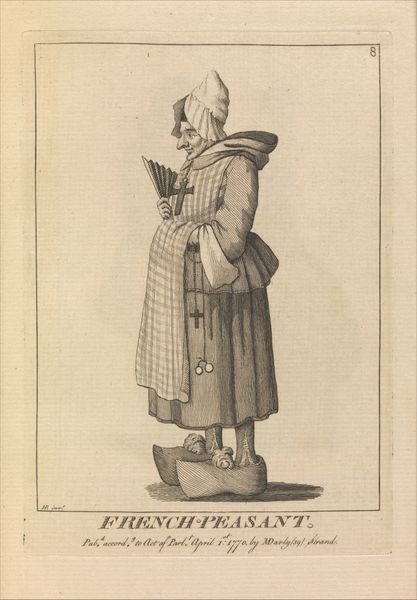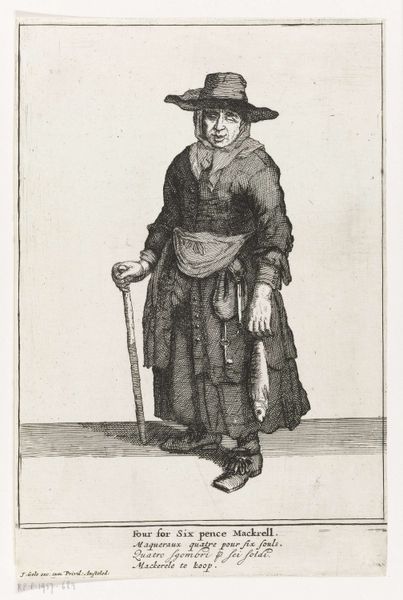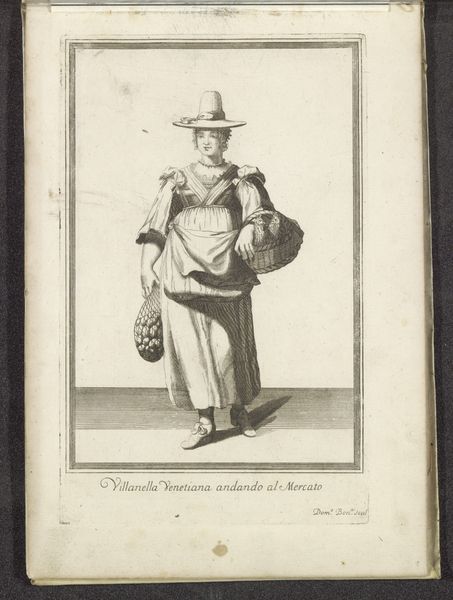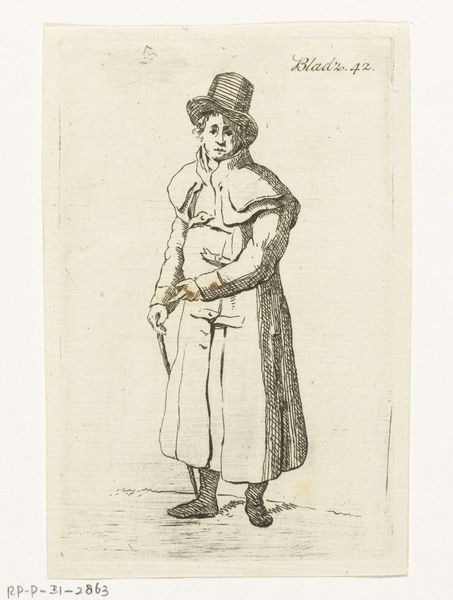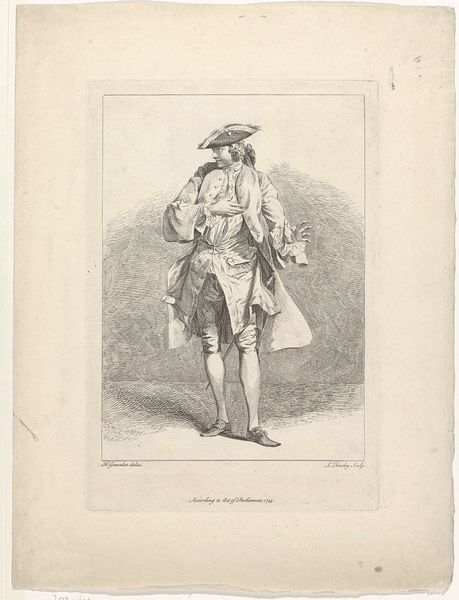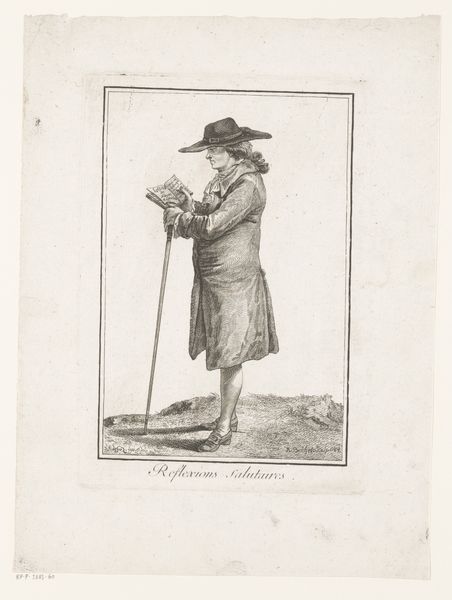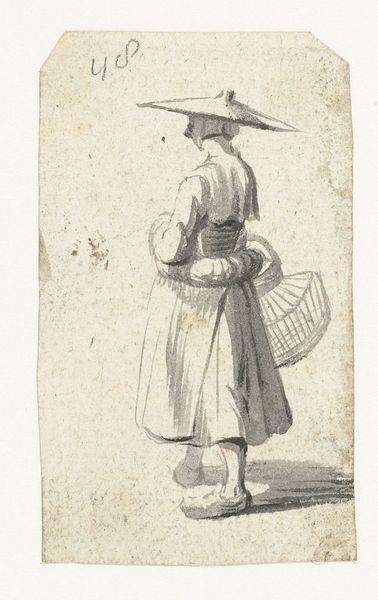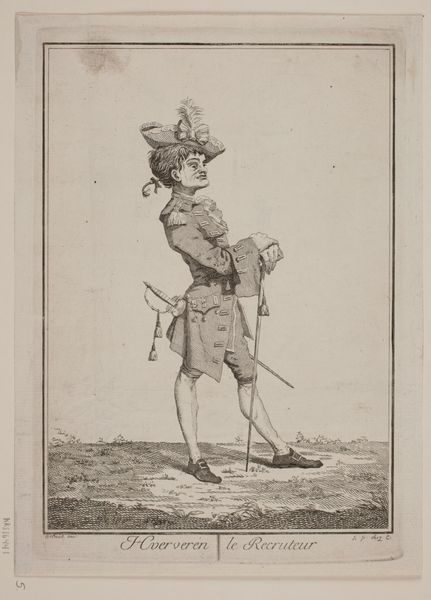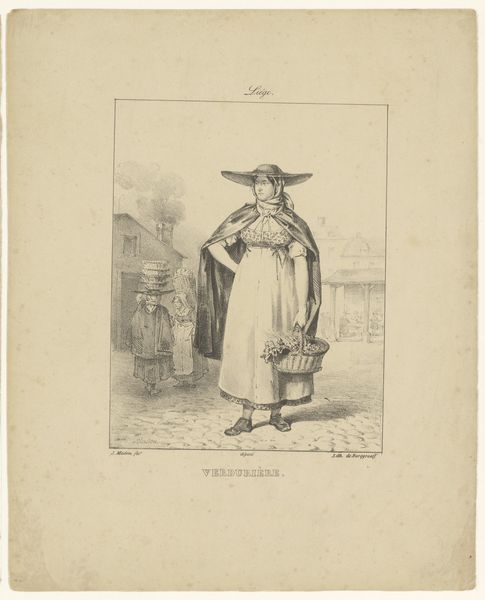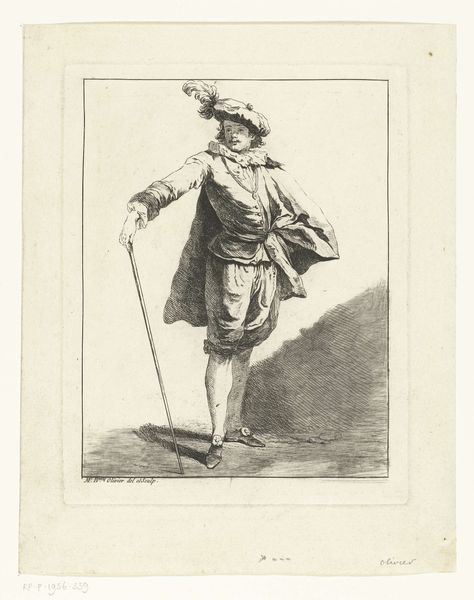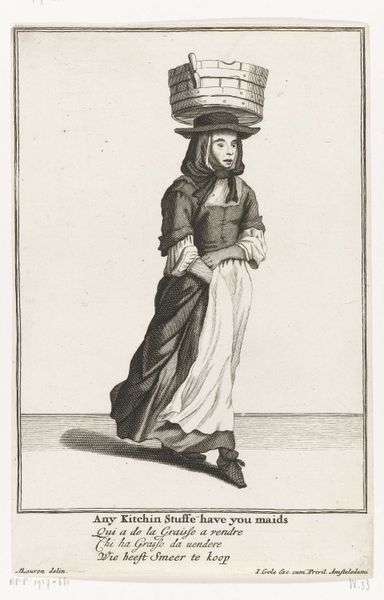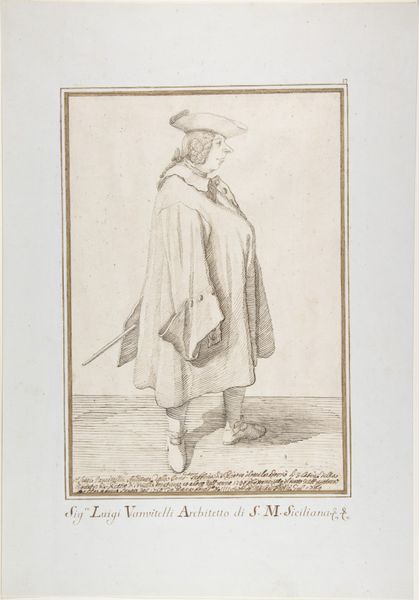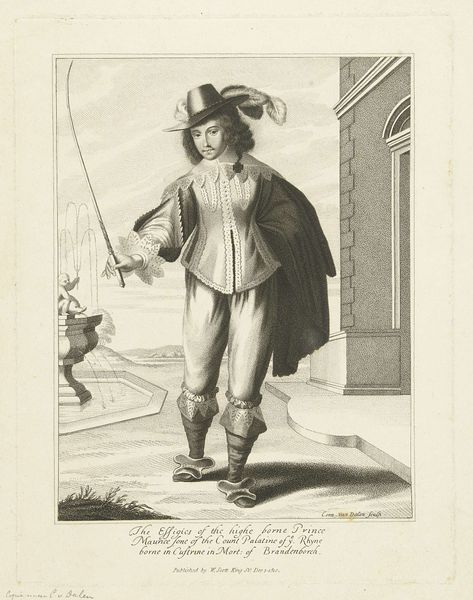
print, engraving
#
portrait
#
baroque
# print
#
old engraving style
#
genre-painting
#
engraving
Dimensions: height 116 mm, width 70 mm
Copyright: Rijks Museum: Open Domain
Curator: Here we have "Brabantse boerin," or "Peasant woman from Brabant", a 1728 engraving by Bernard Picart, part of the Rijksmuseum collection. The work offers a glimpse into the daily lives of women in the historical Brabant region, a geographical area that once spanned parts of what is now Belgium and the Netherlands. What strikes you first about this piece? Editor: I’m immediately struck by the woman’s gaze. It feels so direct, almost challenging. The artist has managed to convey a sense of dignity and resilience in what could have been a simple depiction of rural life. There’s a subtle commentary, perhaps, on the often overlooked contributions of women in agriculture. Curator: Precisely. Consider the context in which Picart was creating this. The Baroque period was marked by grandiosity and elaborate displays of wealth. Works depicting the lives of everyday people can be considered relatively unusual. It underscores an emerging interest in capturing the varied strata of society, shifting from royalty and aristocracy towards more grounded representations. Editor: Absolutely. And that feeds into my interpretation of her expression. It's not just a portrait, it's a statement. The way she’s positioned, centrally, the basket of goods she carries – there’s a deliberate effort to foreground her labor and her role in the economy of the time. I’m curious about the political undercurrents in genre paintings of this era. Curator: Indeed, we have to ask, why represent a rural woman at this time? Consider, too, how prints circulated widely, democratizing access to images. This portrayal reaches a broad audience and could even inform budding ethnographic interests that sought to categorize and understand different cultural groups within a nation. The woman, the goods she carries and the fashion, act as an authentic register of the region. Editor: Thinking about her fashion, the practical dress and that functional hat speak volumes. They point to labor and a grounded existence. It goes against the idealized female form often depicted at that time. This peasant woman embodies strength. Curator: Right, it prompts us to challenge those idyllic and classical artistic representations through historical and cultural analysis. This simple rendering contains a world of meanings relating to representation and labor in the early 18th century. Editor: It certainly adds a layer of appreciation to a genre piece one could have easily overlooked, revealing the complex relationship between artist, subject, and the societal forces at play during its creation.
Comments
No comments
Be the first to comment and join the conversation on the ultimate creative platform.
